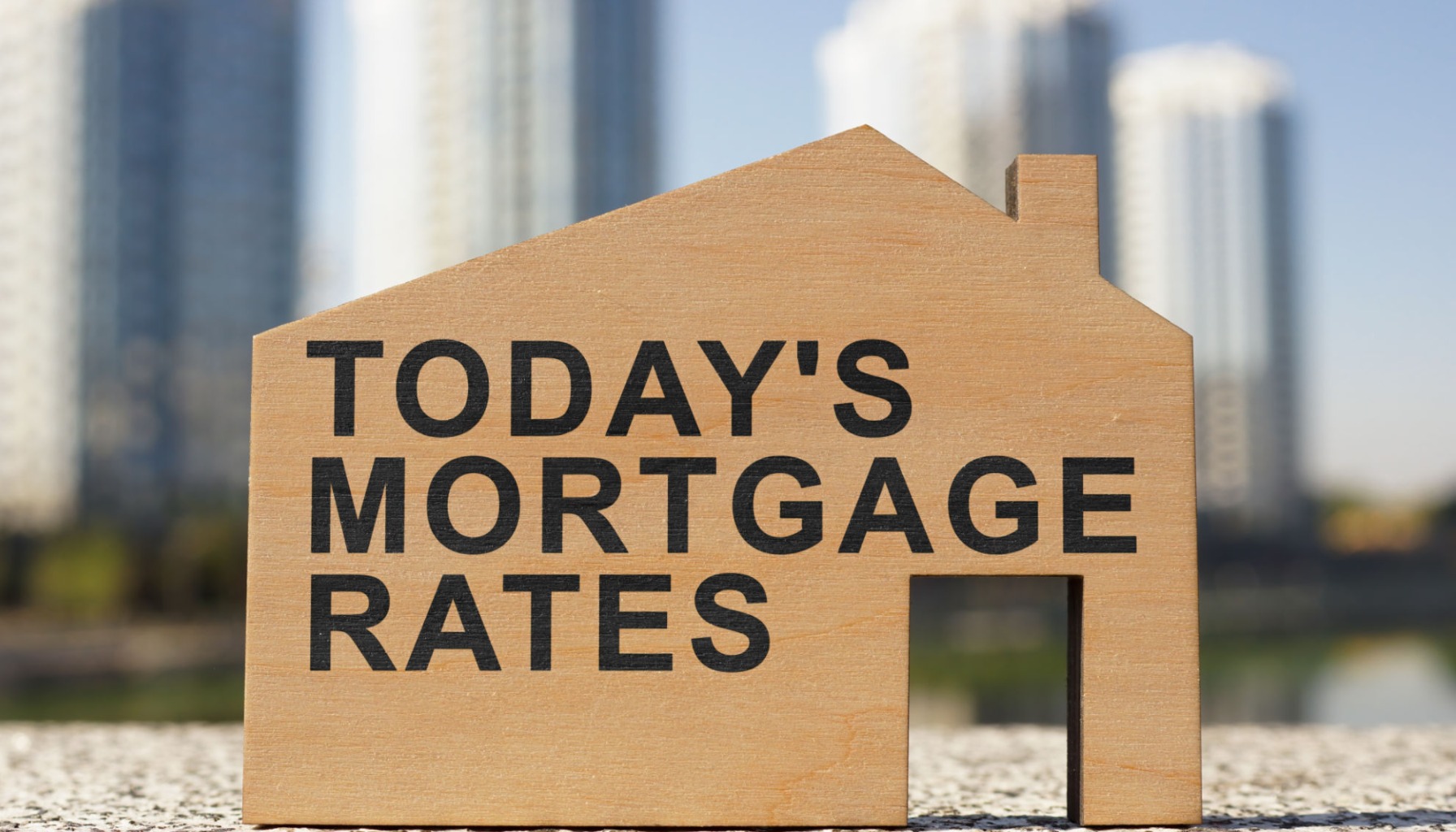As of today, October 10, 2025, the average national rate for a 30-year fixed mortgage has nudged up to 6.48%. This might seem like a small bump, but it's important to understand what's driving these numbers and how they might affect your homebuying or refinancing dreams. The Federal Reserve's recent moves, combined with ongoing economic signals, are playing a significant role in shaping borrowing costs for all of us.
Today's Mortgage Rates – October 10, 2025: Rates Nudge Up Across the Board
The Latest on Mortgage Rates: A Quick Look
Let’s get straight to the numbers, as reported by Zillow. Here’s a snapshot of today’s rates and how they’ve shifted recently:
- 30-Year Fixed Rate: Up to 6.48% (a 1 basis point increase from yesterday).
- 15-Year Fixed Rate: Climbed to 5.73% (an 8 basis point increase).
- 5-Year Arm Rate: Saw a significant jump to 7.28% (up 19 basis points).
It’s also worth noting how these rates compare to the previous week. The 30-year fixed rate is actually down 1 basis point from last week's average of 6.49%, which is a small bit of good news.
For those considering refinancing, the picture is a bit different:
- 30-Year Fixed Refinance Rate: Increased to 7.13% (a 17 basis point jump from yesterday).
- 15-Year Fixed Refinance Rate: Rose to 6.05% (up 19 basis points).
These figures highlight a market that's still finding its footing. While my experience tells me that minor daily fluctuations are common, the broader trend is what we really need to watch.
What's Behind the Numbers? The Federal Reserve's Influence
To truly understand today's mortgage rates, we have to talk about the Federal Reserve. Back on September 17, 2025, they made a move that had been anticipated: they cut their benchmark interest rate. This was the first cut of the year, coming after a pause that likely felt long to many. The target range is now between 4.0% and 4.25%.
Why does this matter so much? The Fed’s primary tool is the federal funds rate, which influences borrowing costs throughout the economy. When the Fed lowers its rate, it generally makes it cheaper for banks to borrow money, and they, in turn, should pass those savings onto consumers.
However, the connection between the Fed's rate and mortgage rates isn't always a straight line. The 10-year U.S. Treasury yield is the real benchmark that lenders use to price 30-year fixed mortgages. Think of it this way: investors who buy mortgage-backed securities want a return that's competitive with safer investments like Treasury bonds.
Data Snapshot:
| Loan Type | Current Rate (Oct 9, 2025) | 1-Week Change |
|---|---|---|
| 30-Year Fixed (Buy) | 6.48% | +0.01% |
| 15-Year Fixed (Buy) | 5.73% | +0.08% |
| 5-Year ARM (Buy) | 7.28% | +0.24% |
| 30-Year Fixed (Refi) | 7.13% | +0.17% |
| 15-Year Fixed (Refi) | 6.05% | +0.19% |
As of mid-October 2025, the 10-year Treasury yield is hovering around 4.12%. While this is a bit lower than its long-term average, it's not drastically down. The Fed’s rate cut was expected by the market, meaning much of its impact was likely already priced in.
My professional opinion? The market is still digesting the Fed's move and trying to gauge future actions. We're in a period of careful observation, waiting for more economic data to guide the next steps.
The “Spread”: Why Your Mortgage Rate Isn't Exactly the Treasury Yield
This is where things get interesting and where my experience really comes into play. You might be asking, “Why isn't my 30-year mortgage rate just a bit higher than the 10-year Treasury yield?” The answer lies in the “spread.”
The spread is essentially the difference between the mortgage rate and the 10-year Treasury yield. Lenders need to factor in risks associated with mortgages – things like the possibility of borrowers defaulting or refinancing their loans early (which can reduce lender profits). To compensate for these risks, mortgage rates are typically higher than Treasury yields.
Crucially, this spread has been wider than usual lately, often sitting above 2 percentage points. This means that even if the 10-year Treasury yield drops, a significant portion of that decrease might not fully translate to lower mortgage rates because the spread remains elevated. This is a key reason why we haven't seen drastic drops in mortgage rates despite the Fed's rate cut.
Diving Deeper: Different Loan Types and What They Mean
It's vital to remember that “mortgage rates” isn't a one-size-fits-all term. Different loan types have different rates, reflecting their unique terms and risk profiles.
Conforming Loans (for loans meeting Fannie Mae and Freddie Mac limits):
- 30-Year Fixed: 6.48% (a small daily increase, but down slightly from the prior week's average). This is the most popular choice for homebuyers, offering stability.
- 20-Year Fixed: 6.55%. This is an interesting option. It’s slightly higher than the 30-year fixed now, which is unusual and suggests a market dynamic where shorter-term, higher-risk loans are temporarily commanding higher rates.
- 15-Year Fixed: 5.72% (a slight increase). These offer lower interest rates and quicker payoff but come with higher monthly payments.
- 5-Year ARM: 7.28% (a notable jump). Adjustable-rate mortgages (ARMs) start with a fixed rate for a set period (here, five years) and then the rate adjusts periodically based on market conditions. They are currently more expensive than fixed-rate loans for the initial period, which is a sign of market uncertainty or anticipation of future rate increases.
Government Loans (backed by agencies like FHA and VA):
- 30-Year Fixed FHA: 6.03% (up). These are designed for borrowers with lower credit scores or smaller down payments.
- 30-Year Fixed VA: 6.21% (up). These are for eligible veterans and active-duty military, often offering excellent terms with no down payment required.
My takeaway here? While headline rates grab attention, it’s essential to compare rates for the specific loan type that fits your financial situation. The current data shows some interesting shifts, like the 5-year ARM being pricier than the 30-year fixed, which is a signal to pay close attention to the details.
The Refinance Picture: An Opportunity for Some, a Challenge for Others
Refinancing is about replacing your current mortgage with a new one, ideally with better terms. Today's refinance rates are generally higher than purchase rates across the board.
- The 30-year fixed refinance rate is at 7.13%, a significant climb.
- The 15-year fixed refinance rate is at 6.05%.
This gap between purchase and refinance rates is widening. For homeowners who secured mortgages when rates were at their absolute lowest a couple of years ago (say, in the 2-3% range), refinancing now doesn't make financial sense. However, for those who bought or refinanced when rates were higher than today's purchase rates, but still lower than current refinance rates, there might be room for improvement.
It all depends on your individual rate and how much you can realistically lower it by refinancing, considering closing costs. My advice is always to run the numbers carefully.
Related Topics:
Mortgage Rates Trends as of October 9, 2025
Mortgage Rates Predictions for the Next 12 Months: Oct 2025 to Oct 2026
Mortgage Rates Predictions for the Next 6 Months: October 2025 to March 2026
Mortgage Rates Predictions for Next 90 Days: October to December 2025
Looking Ahead: What's Next for Mortgage Rates?
The economic outlook is a juggling act. The Fed is trying to cool inflation (currently at 2.9% year-over-year for core PCE) without tanking the economy or causing the unemployment rate (now at 4.3%) to spike too much.
Here’s what I'm watching closely:
- Inflation Data: If inflation continues to ease consistently towards the Fed's 2% target, the Fed will likely feel more comfortable cutting rates further.
- Labor Market: A significant cooling in job growth or a rise in unemployment could push the Fed to act more aggressively with rate cuts.
- Economic Growth: Strong GDP growth is good, but if it starts to fuel inflation again, it complicates the Fed's plans.
- The Spread: For mortgage rates to see substantial, sustained drops, that stubborn spread between Treasury yields and mortgage rates needs to narrow. This often happens when the market feels more confident about the economic outlook and the perceived risk of mortgage-backed securities decreases.
My personal take is that the Fed will continue its cautious, data-dependent approach. We’re likely to see more gradual shifts rather than sudden, dramatic changes. The projected two additional rate cuts for the rest of 2025 are on the table, but they are not guaranteed. Each depends on what the economic reports tell us.
What Today's Mortgage Rates Mean for You
- For Buyers: While rates have ticked up slightly today, they are still more favorable than the highs we saw last year. If you're looking to buy, work with your lender to understand your options and lock in a rate when you feel comfortable. Home prices remain a challenge in many areas, but improving inventory might offer more choices soon.
- For Sellers: A more stable, albeit slightly higher, rate environment might encourage some “rate-locked” homeowners to finally list their homes, which could help ease inventory shortages.
- For Refinancers: If your current rate is significantly higher than today's purchase rates, it might be worth exploring, but do your homework. For many, the numbers may not quite add up yet.
Ultimately, today's mortgage rates on October 10, 2025, represent a market in transition. The Fed's September cut has set a new tone, but the path forward will be dictated by economic data. Be patient, stay informed, and focus on making the best decision for your personal financial goals.
Capitalize Amid Rising Mortgage Rates
With mortgage rates expected to remain high in 2025, it’s more important than ever to focus on strategic real estate investments that offer stability and passive income.
Norada delivers turnkey rental properties in resilient markets—helping you build steady cash flow and protect your wealth from borrowing cost volatility.
HOT NEW LISTINGS JUST ADDED!
Speak with a seasoned Norada investment counselor today (No Obligation):
(800) 611‑3060
Also Read:
- Will Mortgage Rates Go Down in 2025: Morgan Stanley's Forecast
- Mortgage Rate Predictions 2025 from 4 Leading Housing Experts
- Mortgage Rate Predictions for the Next 3 Years: 2026, 2027, 2028
- 30-Year Fixed Mortgage Rate Forecast for the Next 5 Years
- 15-Year Fixed Mortgage Rate Predictions for Next 5 Years: 2025-2029
- Will Mortgage Rates Ever Be 3% Again in the Future?
- Mortgage Rates Predictions for Next 2 Years
- Mortgage Rate Predictions for Next 5 Years
- Mortgage Rate Predictions: Why 2% and 3% Rates are Out of Reach
- How Lower Mortgage Rates Can Save You Thousands?
- How to Get a Low Mortgage Interest Rate?
- Will Mortgage Rates Ever Be 4% Again?



